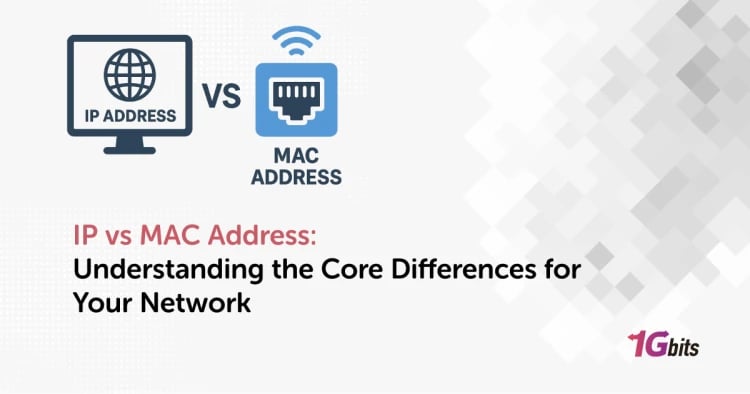What is LAN? The LAN comprises many computers linked to each other and forms a network in a remote location. A working example of a LAN connection can be seen in computer Labs, government offices, corporate offices, and other places where many computers are present in close proximity. In LAN connection, each computer uses TCP/IP ethernet to send and receive information from one computer to the other. But what does LAN stand for? A LAN is the short form of a Local Area Network.
This is just the basic definition of LAN; to have a deeper understanding of LAN and why it is still popular, you need to read the given article below. Today we will show you how a LAN connection works along with some other interesting facts about LAN, which will make us understand its importance in developing other forms of networks like Wifi, WAN, and others.
A Brief History About LAN [local area network]
With the deployment of personal computers in offices, schools, colleges, and at home, the information sent between the office computers changed drastically. Now the terminals present in the computers can be used to perform their own set of instructions and maintain their memories. As a result, the mainframe devices now have breathing space and can be used to perform more complex tasks.
LAN allowed data transmission between workers and even between the devices. Now printers can take the printing request from more than one computer and thus make sure that the printer is not underutilized. Moreover, an information request can be sent directly to the other system with a LAN connection, resulting in immediate communication between the two parties.
In the early days, the most common usage of LAN was for interoffice communication or to send emails to each other. This made emails the official communication record between two workers, companies, and devices.
With the increase of personal computers at home, LAN became more than a network used in the offices. With the implementation of LAN on various personal computers at home or in the school, people can easily share files between the computers. There is no need to put the data in an external drive and copy it onto the other system.
The Basic Layout Of LAN
Even two computers can form a LAN connection between them, and even a thousand computers placed in the same building can form a LAN connection. As a result, it is fair to say that LAN is quite flexible regarding the systems it can handle in the network. A LAN connection requires you to have an ethernet cable to make a physical connection with the layer two switches and other devices with which you want to connect with and communicate.
In the case of more extensive LAN networks, layer three switches or routers could be added to streamline the traffic flows. Apart from this, a LAN connection has a total of 7 different components, making it possible for your LAN network to send and receive files instantly.
1 Network Interface Card (NIC):
Put simply, it is a computer installed in a computer so your computer can connect to the network. A NIC in the past was a separate circuit board connected to the motherboard, but now most motherboards come with a pre-installed NIC.
2 Server:
A server is a computer designed to process the request and deliver the data to the other client over the LAN or internet connection. There are three types of servers, a file server, a print server, and a communication server.
3 Station:
A station is just another computer in the LAN network but is directly connected to the server. All incoming and outgoing communication from the server passes through the station and then goes to the receiving device.
4 HUB:
A hub is a common connection point to which each device present in the network is connected. Hubs are more often used to connect more than one segment of LAN. Hub has multiple ethernet ports, so when a data packet arrives from one of the ports, it is copied to all the other ports present in the hub—resulting in all the segments of the LAN network seeing the data packet.
5 Switch:
The switch's working is quite like a hub; it is also a central point for connecting network cables. However, in the case of a LAN switch, it receives a data packet from one of the connected computers and sends the data packet only to the specific computer. At the same time, all the other computers will have no knowledge of the data packet's transaction.
6 Router:
A router is used to make a connection between a LAN network with the Internet. The LAN router has a configuration table that decides where the received data packet must go in the network.
7 Access Points:
It could be a hardware device or a computer's software program that works as a communication hub for users present on the LAN network from a wireless device who want to make a wired connection from the network.
Working Of LAN
The earlier implementation of LANs used a coaxial cable, which is an electrical cable, and it was used to carry radio signals. The LAN connection was developed by connecting two or more computers via physical connection so the devices can share the files.
The coaxial cable was used so that it could join the radio transmitters with their antennas. But later on, it was found that coaxial cable can be used to deploy internet connection, and it can have separate cable channels. The most common form of LAN is the ethernet.
Ethernet has now become a powerful data transfer link technology that uses physical connections. The ethernet that we have today can reach up to 100Mbps speeds. The cable connection can extend to 100 meters, but compared to optical, this maximum length seems nothing. As a result, LAN is deployed everywhere to access the Internet.
A LAN connection cannot work on its own, and it needs to have a Wifi connection (wireless Local area network) or an ethernet connection to provide internet connectivity to the devices. A Wifi is a protocol that transfers data via radio waves.
Different Types Of LAN
There are mainly two types of LAN connection, and they are:
Client/Server LAN
In this type of LAN connection, various client devices are connected to one server machine, which works as a centralized system to handle several activities like storing data, printer and plotter access, and the network's traffic. In a client/server LAN connection, each system using the LAN connection is connected physically with the other using an ethernet cable or a wireless medium.
Peer-to-Peer LAN
In a Peer-to-Peer connection, there is no need for a centralized server machine, so it cannot handle massive file workloads as there is no dedicated centralized machine handling the sending and receiving of the files. In this form of LAN, connection devices are connected in parallel.
Setting Up LAN Connection
To set up a home LAN connection, you need to follow the procedure below.
Step - 1: First, you need to mark out the local services you want to access through the LAN network, like a printer, a fax machine, a scanner, network disk drives, and even a server.
Step - 2: Find out how many devices are going to be connected to your network because each device, no matter if it's a server, a printing machine, or a laptop, needs to have a unique address in the network.
Step - 3: Draw a cable map for the devices which will always be connected and are stationary in their locations. A wired LAN will always be better than a wireless connection; use standard ethernet cables to connect them with the switch or a router.
Step - 4: Now that you have found the number of cables coming in and going out from the central device. You need to make a purchase of a router or a switch, depending on your need. A cable router is a better option than the two. If the model you select doesn't have enough ports to connect all the devices, you need to buy a switch. Otherwise, a router will be enough.
Step - 5: Configure the WAN port of the cable router, and these settings will vary from vendor to vendor. Most of the information on how to configure your router can be supplied to you by the Internet Service Provider (ISP).
Step - 6: Configure the LAN ports of your router; in most cases, the LAN ports will, by default, act as a Dynamic Host Configuration Server DHCP. This means the router will automatically allot the address to all the devices which are connected to it. But be sure to have enough present addresses outside the assigned range, so you can provide static addresses if you need them.
Step - 7: Now connect the network's wires using the ethernet cables according to the cable map you have created in step - 3. Make a connection with the switch to the cable router LAN port via up-link or a straight port which can be found on the switch.
Step - 8: Finally, test out the services you are looking to work with the LAN connection from each device in the network. Don't forget to check the read and write permissions of shared files by copying the files from a server to a workstation like a laptop.
What Makes LAN Different From WAN?
A LAN connection works with a group of network devices that allow communication between the devices present on the network. A LAN connection is more or less a private network, and the control of the network is closely packed with the devices in close proximity to each other.
In terms of propagation delay, LAN has the minimum of it compared to both MAN and WAN. A LAN connection can be found in colleges, hospitals, homes, etc. WAN stands for Wide Area Network, covering quite a larger area than LAN.
A WAN connection is expensive, and a single organization does not own it. In order to transfer and receive data via WAN, PSTN, or satellite medium is used. Compared to LAN, WAN is not restricted to a building or an infrastructure. But it might have its limits within a state or a country.
A WAN is made by connecting several LANs and WANs, thus making it publicly accessible. The internet speed in WAN is quite fast, and the components used for WAN are much more expensive to buy and deploy. A typical example of WAN can be seen in the usage of the world wide web.
Benefits Of LAN
If you are thinking about creating a LAN network for your home, make sure you read out its benefits before deciding.
Resource Sharing
If you are setting up the LAN connection in your home, then it will make resource sharing much easier for you across the different devices. You can play a movie on your DVD drive using the file stored on the server. All the devices present in the LAN are connected to a single device. So when a device needs a resource, it can be instantly shared via a LAN network.
Software Sharing
Software sharing is another significant advantage of using a LAN connection. A single computer on which the licensed software is running can share the software resources with the other devices present in the network. Thus, there is no need to purchase separate software for each device; all can be worked under one software license.
Convenient Communication
When you have a LAN connection, you don't need to have the Internet to send and receive messages from the other devices on the network. The data is placed on the server machine and can be accessed anytime when a user requires it. Hence it saves a lot of time when the messages between various devices are exchanged.
Centralized Data
As we have said earlier, multiple devices' data are stored in one location: the centralized server. Any device on the network can be used to access the data or the information on the server. If a user makes changes in the data using one of the devices, all the other devices can see and fetch the updated data file. Likewise, you can create a separate set data file and add a security measure to it. So it can only be accessed by you when you enter the password.
Internet Sharing
Last on our list is the benefit of sharing a single internet connection across all devices connected to the network. A single computer with an internet connection can share the internet connectivity with all the other devices which are present on the network. You can see the implementation of network sharing in offices and cybercafes.
Conclusion
The Internet has become a household need, whether you are a businessman, a corporate professional, or even a college student. You need the Internet on all your devices, but getting a separate internet connection for each device isn't an ideal solution. That's where the LAN connection is going to help you out.
We hope that this blog was able to answer the question what is LAN? With time the LAN network has upgraded itself. As a result, it is still in use, and right now, if you are accessing the Internet using a wifi router, then you are using a LAN connection to access the Internet.
People also read:









